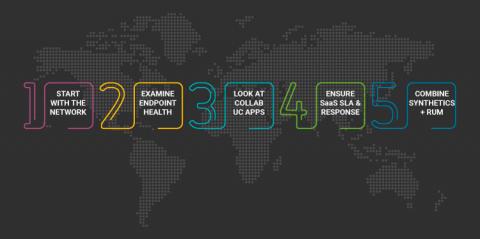Teams | Collaboration | Customer Service | Project Management
Office 365
Exoprise Service Watch Named Leading DEM Solution for Today's Cloud Powered Digital Workplace
Microsoft Outlook on the web Outage, June 6th, MO572252
Yesterday’s Microsoft 365 Suite-wide outages, led to continual faults for Outlook on the web on Tuesday, June 6th. When the outages pile up, it becomes difficult to tell when one starts and the other ends. The latest: Can’t access Outlook on the web and other Microsoft services and features The prior day incidents began with EX571516: Some users are unable to access Outlook on the web, and may experience issues with other Exchange Online services.
5 Tips to Improve Employee Digital Experiences
Companies' reliance on technology grows daily. However, with Information Technology (IT), infrastructure complexities on the rise, overall system performance fluctuates. Any network, app, or service delay hinders individual and corporate performance. Identifying the source of these digital pain points resembles searching for a needle in a haystack. What follows are a handful of tips, so you sift through the hay faster, reduce outages, and improve employee digital experiences.
Troubleshooting Microsoft Teams
Troubleshooting Microsoft Teams
What's Missing in Free User Experience Monitoring Tools?
You get what you pay for is a common axiom, one that even applies to infrastructure management solutions. Cloud vendors bundle Digital Experience Management (DEM) solutions with their services, seemingly at no extra charge. But such products lack the capabilities needed to understand how enterprise computing resources function. As a result, corporations do not make needed adjustments and lose time, revenue and increase user frustration.
Synthetics and Service Watch Dashboards
Device Groups in Dashboards
4 Key IT Operations Practices for Better Management
Here we go again. If 2022 wasn’t enough, there are new challenges in 2023 staring right at information technology leaders. As interest rates rise and consumer demand slows, companies plan to cut costs and do more with less. But what does all this mean for you? Amid this uncertainty, the IT operations department must adapt well to these changes. Because if they don’t, the business they support will be disadvantaged.











